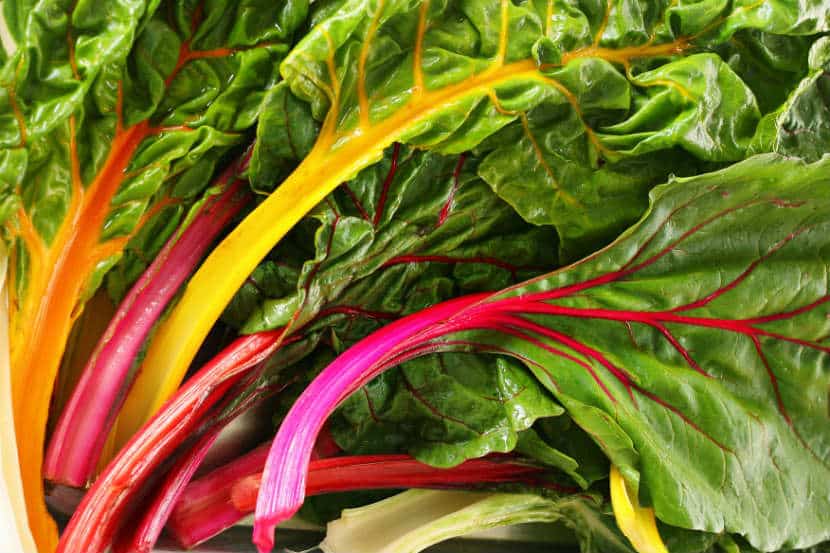Green leafy vegetables provide excellent medical properties that rank amongst the best superfoods. It is impossible to stay healthy and reach fitness goals without eating them. This article shall discuss the top green leafy vegetables’ health benefits and nutritional values.
These vegetables are necessary when putting together a diet to lose weight, build muscle, save money, or improve your health. They provide many vitamins and nutrients while fighting countless diseases. Thus, they combat all the leading causes of natural death.
Hippocrates, the father of modern medicine, said, “let food be your medicine and medicine be your food.” You can reach your health and fitness goals best by eating a well-balanced diet and exercising.
Thus, you can determine the quality of your life by the foods you eat. In addition, when you knowingly choose foods for their health benefits and healing properties, you can reach your goals faster.
These green leafy vegetables can serve as cooked dishes, between meals, or as salads to improve your diet. You can cook the dark green leafy vegetables and eat the light green vegetables in salads and sandwiches.
Also, you can use many of them in smoothies and juices. They all provide a wealth of nutrients with a low-calorie count. The calorie count plays a significant role in your health and fitness. You cannot lose weight unless you stay in a calorie deficit.
Here is the list of the best green leafy vegetables and their benefits:

Arugula
The green leafy vegetable Arugula is a powerful antioxidant that supports cell growth and eye health, especially night vision. It also improves heart, kidney, and lung function.
In addition, arugula inhibits cancer growth and improves immune defenses. It is an excellent choice for building healthy bones. It contains six calories per serving and vitamins A, C, E, K, folate, calcium, phosphorous, magnesium, potassium, choline, and fiber. Arugula is an alkaline food with a pH level greater than seven.

Collard Greens
The green leafy vegetable Collard Greens improves liver function and fights diabetes. It also helps with digestion, skin, and hair.
Also, collard greens help lower LDL cholesterol, regulate blood sugar, combat osteoporosis, and improve sleep and mood. It also boosts the immune system against viral and bacterial infections. Collard Greens contains 11 calories per serving and vitamins A, B6, C, E, K, folate, choline, manganese, potassium, calcium, and fiber.

Iceberg Lettuce
Iceberg Lettuce, although the lowest of all leafy greens nutritionally, Iceberg Lettuce combats anemia, heart disease, and age-related illnesses. It contains eight calories per serving and vitamins A, C, E, K, iron, folate, choline, manganese, phosphorus, potassium, calcium, and fiber.
Thus Iceberg Lettuce provides powerful antioxidants that support muscle, bone, and nerve function. It also supports eye health and reduces blood pressure.

Kale
Kale is the most nutrient-dense green leafy vegetable. It aids in blood clotting, promotes healthy vision and retinal function, and fights cancer.
Also, it fights diabetes and heart disease and supports bone, digestion, skin, eye, and hair health. It contains 34 calories per serving and vitamins A, B6, C, K, iron, fiber, niacin, folate, calcium, manganese, magnesium, phosphorous, potassium, riboflavin, and cooper. Kale is an alkaline food with a pH level of 6.4 raw and 6.8 when cooked.

Mustard Greens
The green leafy vegetable Mustard Greens lower the risk of chronic disease by providing a range of powerful phytonutrients and antioxidants.
In addition, it fights against arthritis, cognitive decline, and autoimmune disorders. Mustard greens also prevent anemia, lower LDL cholesterol, battle the onset of heart disease, and offer protection against cancerous growth. It contains 15 calories per serving and vitamins A, B6, C, E, K, iron, fiber, folate, calcium, manganese, magnesium, potassium, riboflavin, and thiamin.

Romaine Lettuce
Romaine Lettuce provides powerful antioxidants, supports cell growth, nerve function, and reproductive health, and helps maintain kidneys, lungs, and heart.
Also, it promotes heart health and prevents strokes and cancer. In addition, it builds healthy bones, eyes, skin, and mucous membranes. It contains ten calories per serving and vitamin A, C, K, iron, folate, choline, calcium, manganese, magnesium, phosphorus, potassium, and fiber.

Spinach
The green leafy vegetable Spinach boosts hydration, curbs appetite, prevents osteoporosis, cuts the risk of anemia, improves the immune system, strengthens eye health, and acts anti-inflammatory. Spinach ranks high amongst the green leafy vegetables. It improves red blood cell function, strengthens bones, regulates heart rate and blood pressure, aids wound recovery, and combats free radicals.
Spinach contains seven calories per serving and vitamin A, B6, C, E, K, fiber, folate, calcium, riboflavin, manganese, magnesium, phosphorus, potassium, and iron.

Swiss Chard
Swiss Chard, the green leafy vegetable, provides a wealth of antioxidants, improves the digestive tract, and promotes weight loss.
Also, it helps maintain connective tissue and controls heart rate, blood pressure, and sugar levels. In addition, it prevents anemia and boosts immunity. It contains seven calories per serving and vitamins A, B6, C, E, K, iron, fiber, folate, choline, phosphorus, manganese, magnesium, potassium, and calcium.

Turnip Greens
The last green leafy vegetable, Turnip Greens, controls blood sugar, offers anti-inflammatory properties, protects against harmful bacteria, supports liver functions, and helps with weight loss.
Also, Turnip Greens enhance collagen synthesis, build healthy bones, combat anemia, and boost immune defenses against cancer and illness. It contains 18 calories per serving and vitamins A, B6, C, E, K, iron, folate, copper, manganese, magnesium, potassium, calcium, and fiber.

How to eat the green leafy vegetables to combat specific diseases and illnesses
Lower Cholesterol:
- Collard Greens
- Mustard Greens
Fight Cancer:
- Arugula
- Kale
- Mustard Greens
- Romaine Lettuce
- Spinach
- Turnip Greens
Support Healthy Bones:
- Arugula
- Iceberg Lettuce
- Kale
- Mustard Greens
- Collard Greens
- Romaine Lettuce
- Spinach
- Turnip Greens
Improves Heart Health:
- Arugula
- Iceberg Lettuce
- Kale
- Mustard Greens
- Romaine Lettuce
- Spinach
- Swiss Chard
Strengthens Healthy Eyes:
- Arugula
- Iceberg Lettuce
- Kale
- Romaine Lettuce
Boost Immune System:
- Arugula
- Collard Greens
- Swiss Chard
- Turnip Greens
Create Radiant Skin:
- Collard Greens
- Kale
- Romaine Lettuce
- Turnip Greens
Control Blood Sugar:
- Collard Greens
- Kale
- Swiss Chard
- Turnip Greens
Manage Blood Pressure:
- Iceberg Lettuce
- Spinach
- Swiss Chard
Fight Anemia:
- Iceberg Lettuce
- Swiss Chard
- Turnip Greens
The medical benefits that all green leafy vegetables provide
All green leafy vegetables improve the digestive tract and make it easy for your body to convert food to energy and dispose of waste. They do this by providing the body with fiber. Fiber acts like a cleaning agent. It passes through the body, scrubbing the walls of arteries and intestines.
Also, green leafy vegetables help to keep the body hydrated and balanced. Nature made them with at least 90% water and many phytonutrients.
They also promote a healthy gut by feeding the beneficial bacteria in the stomach. For example, a study published in 2016 concluded a sugar molecule found in leafy green vegetables like spinach produces the same protective effect on the gut as a probiotic by feeding good gut bacteria.
Finally, green leafy vegetables improve satiety by providing the body with many nutrients, fiber, and water with 35 calories or fewer. Thus, they help you lose weight faster.
In Conclusion
Green leafy vegetables provide a low number of calories and many nutrients and benefits. Eating a serving size of collard greens lowers cholesterol, supports healthy bones, boosts your immune system, creates radiant skin, and controls blood sugar for 11 calories.
The best foods are nutrient-dense, which means you can eat more of them or include other foods on your plate that provide additional nutrients.
Use the list above to identify green leafy vegetables that help you reach your health and fitness goals and gradually include them in your diet. Please include them in sandwiches, side dishes, smoothies, and juices. Please do not add them all at once because that can be overwhelming.
Instead, start by adding one or two green leafy vegetables for 4 – 6 weeks until they become a natural part of your diet. Then add another one or two green leafy vegetables. Over time, you find you are eating more green leafy vegetables.
If you are going to include them in sandwiches, do not use white bread. Instead, use whole wheat or keto-friendly bread, so you don’t eliminate the benefits of the green leafy vegetables. Manufacturers now make wheat and keto-friendly bread with low or no carbohydrates and 50 calories or fewer.
Experts agree the best way you can improve your health and fitness is through a well-balanced diet and 30 minutes of moderate exercise a day. Take your time, avoid quick-fix schemes, and make eating healthy a part of your lifestyle. Thus, by following good practices, you will notice a difference in your health and fitness.




